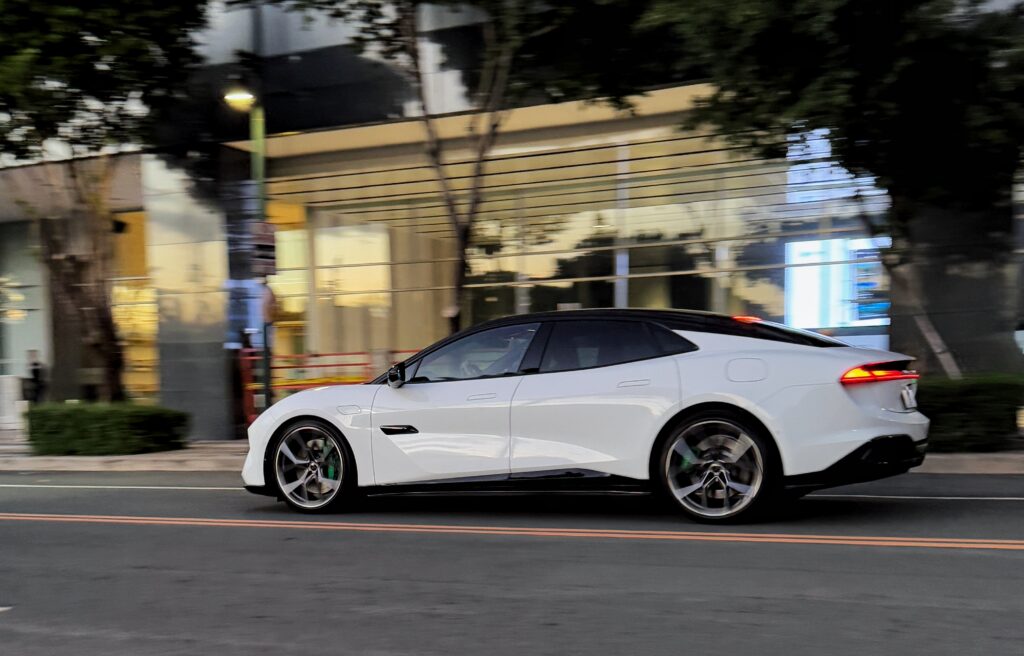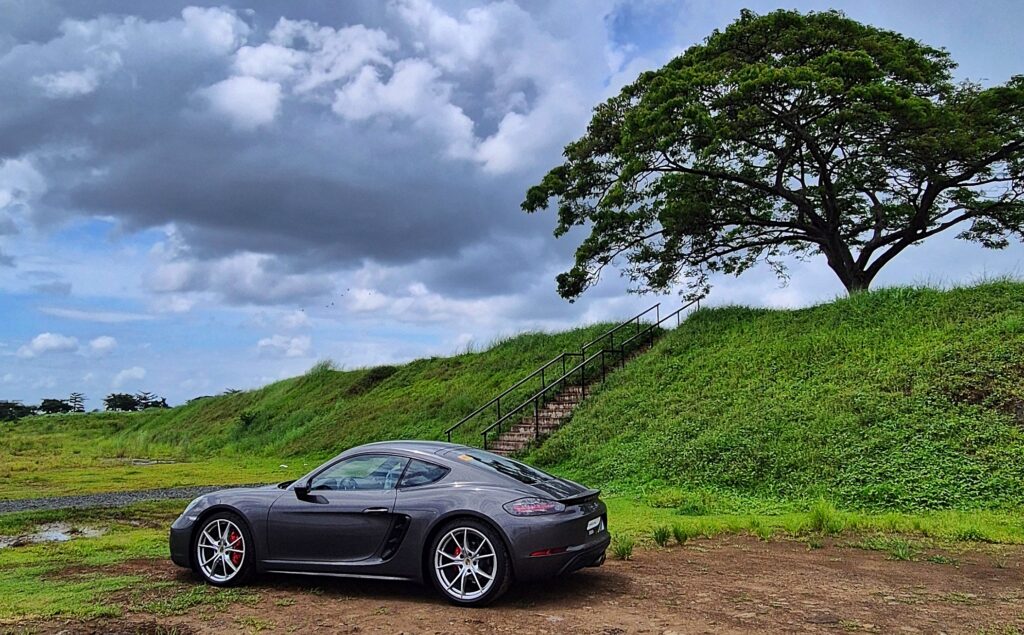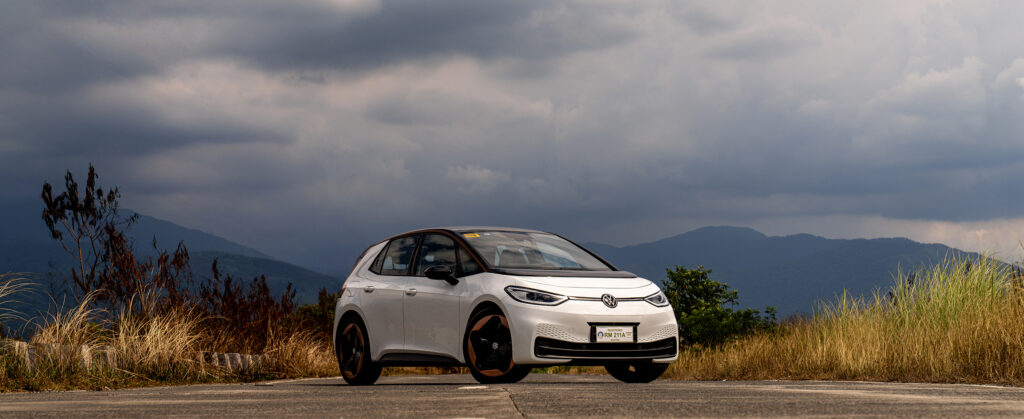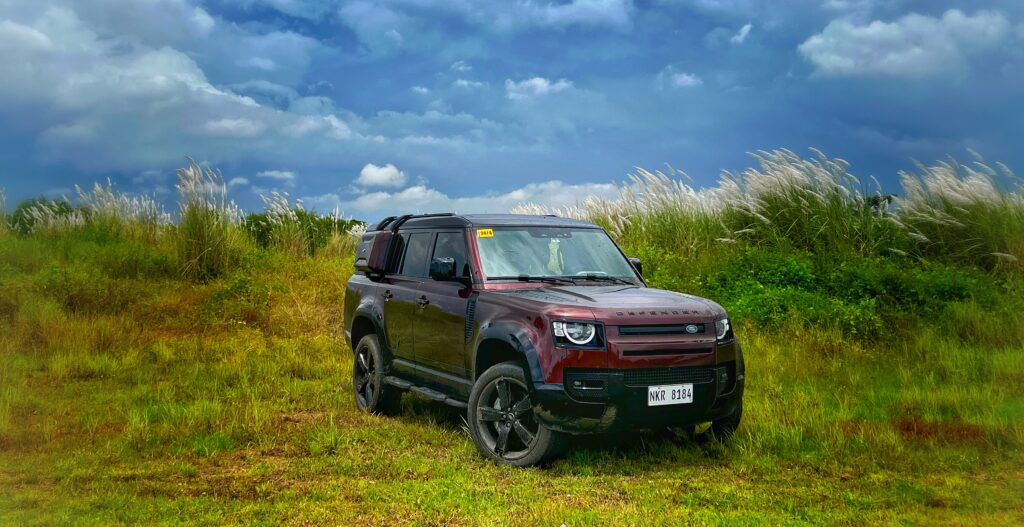It’s big! It’s heavy! It’s a four-door! It’s an electric vehicle! And it has NO racing pedigree whatsoever!
I can imagine traditional Lotus fans screaming at the very top of their lungs about how the Emeya is an abomination from Lotus, much like its Eletre SUV brethren. To add insult to injury, the Emeya is built nowhere near Hethel but is instead manufactured in Wuhan, China. Yes, THAT Wuhan.
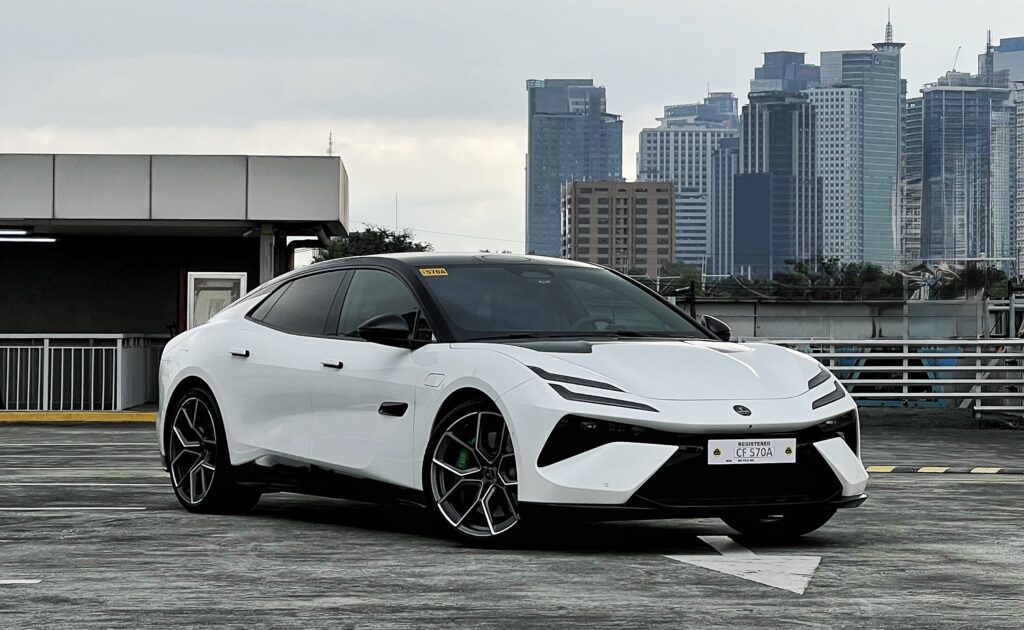
Objectively, let’s examine the finer bits of the Emeya: it’s a modern four-door coupe, a gran turismo for the future with a fastback/liftback rear end making it extra aerodynamically efficient. It’s longer than its key rival, the Porsche Taycan, and just as wide as a BMW i7, to give an idea of its dimensions. It’s built atop Lotus’ Electric Premium Architecture (EPA), which also underpins the Eletre SUV. The fact that the EPA is modular means Lotus engineers can shorten, widen, or lengthen its basic dimensions and increase/decrease the number of its skateboard-style mounted battery packs to suit the model.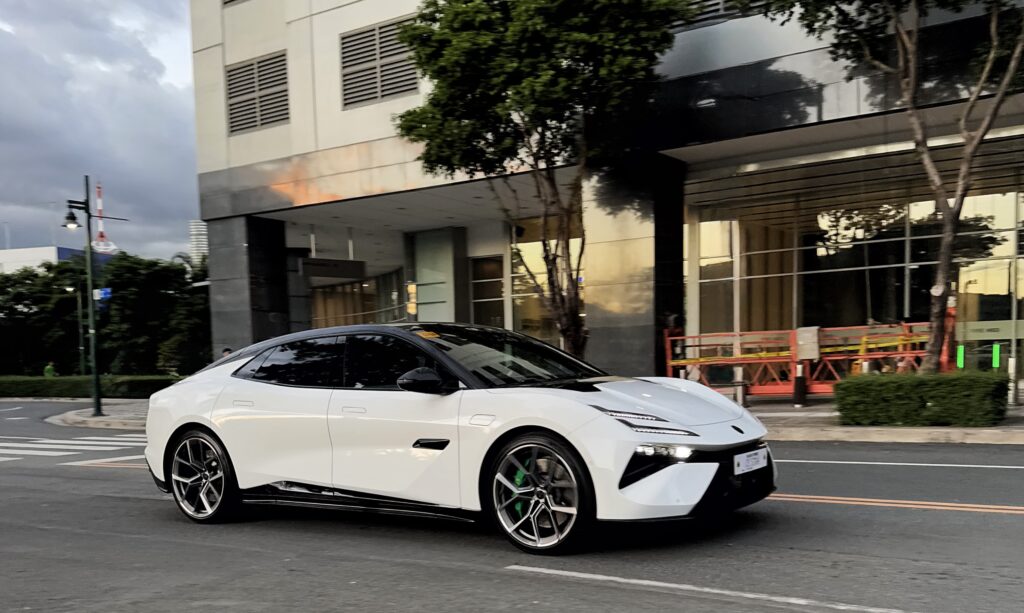
Unlock the car, and the frameless door opens electronically and automatically, with radar and lidar measuring how much space the doors have to swing wide. Get in, press the brakes, and the car is ready. No start button is required; just slot into Drive on the tiny gear lever, and you’re good to go. Similarly, open the door, get out, and lock the Emeya. No specific separate powering-down button or step is required.
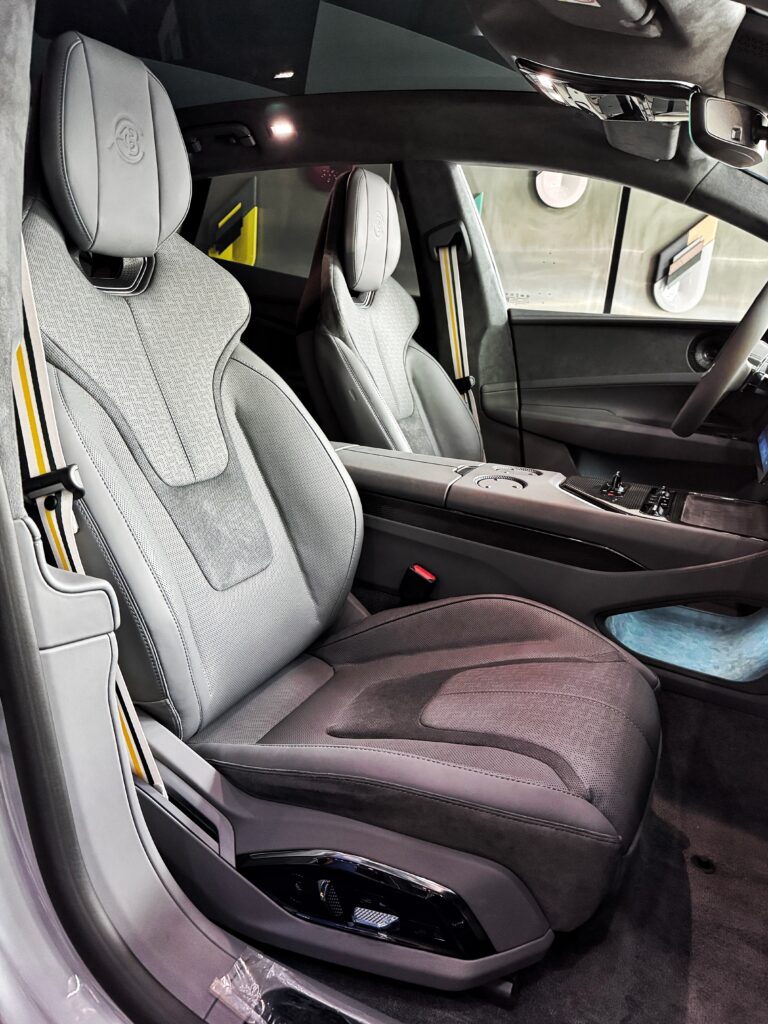
There’s a very usable 429-liter boot, a modestly sized 34-liter frunk, and, of course, four very comfortable, heavily sculpted seats from the optional Executive Seat Pack covered in rich Napa leather, with 8-way front adjustment.
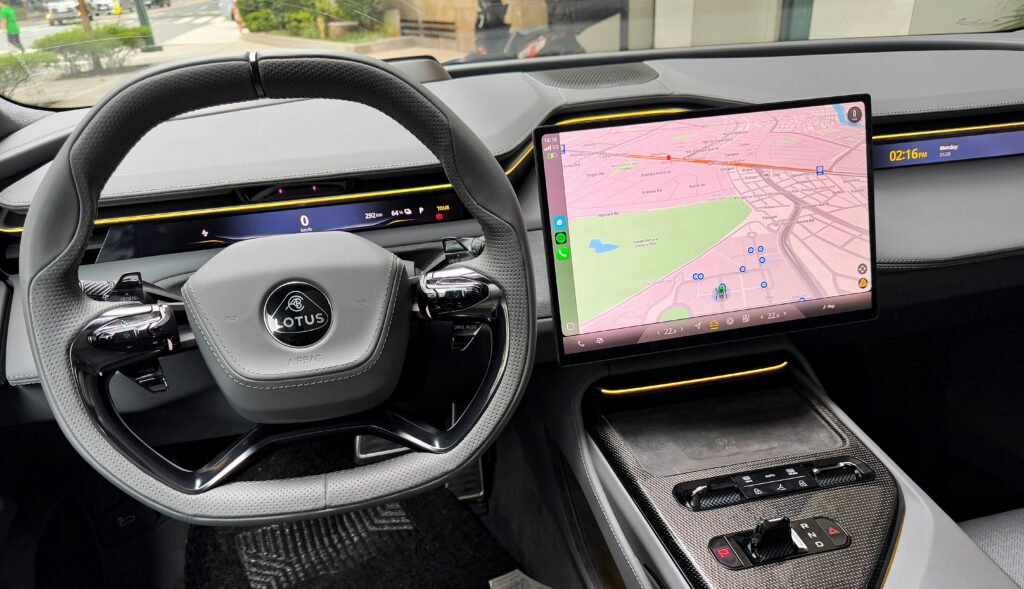
It also comes with tri-colored seatbelts, a ginormous 15.6-inch OLED screen for the infotainment system and in-car telematics, complete with Apple CarPlay and Android Auto. Rear passengers get a smaller 8-inch OLED screen. You can take this on a weekend out-of-town drive, but make sure to map out your route and the charging stations along the way so you have enough juice for the return.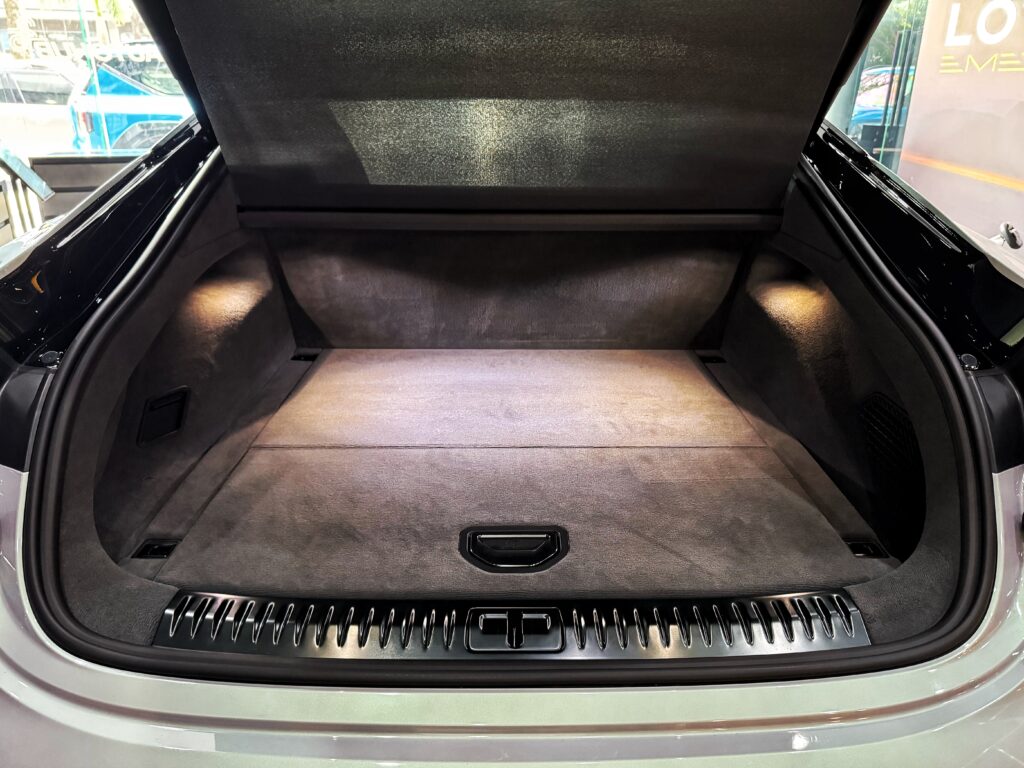
Both driver and front passenger also get a 12.6-inch LCD strip screen displaying the bare minimum information such as speed, state of charge, and range.
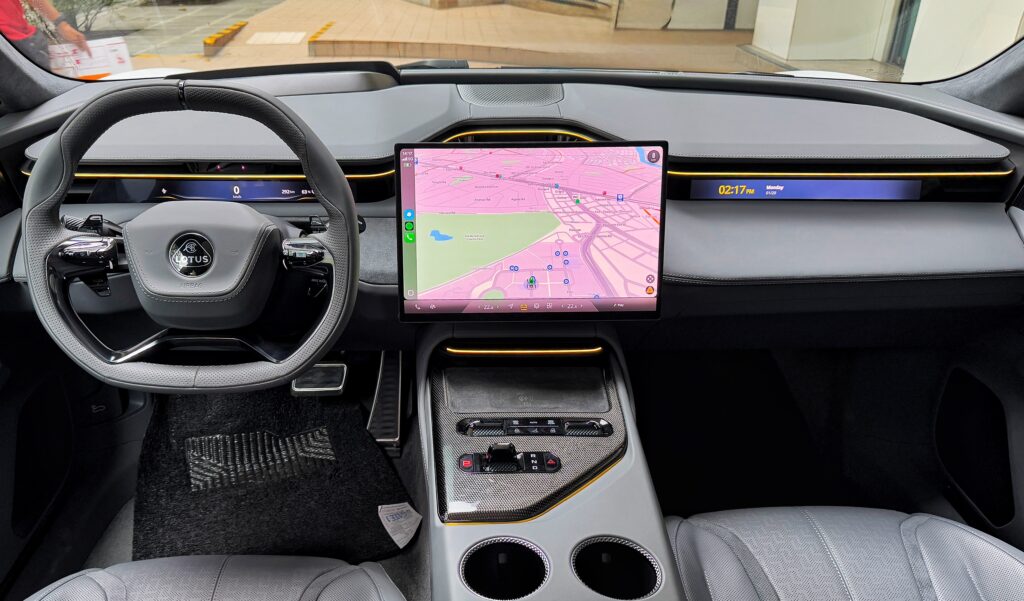 This is the S variant, which means it comes with 603hp and 715 Newton-meters of torque, plus all-wheel drive from its two (2) electric motors, one for each axle. Lotus claims a 610km range is possible from its massive 102kWh battery, but given that lovely chassis (yes, believe it or not!) and addictive power, 400-450km seems more realistic.
This is the S variant, which means it comes with 603hp and 715 Newton-meters of torque, plus all-wheel drive from its two (2) electric motors, one for each axle. Lotus claims a 610km range is possible from its massive 102kWh battery, but given that lovely chassis (yes, believe it or not!) and addictive power, 400-450km seems more realistic.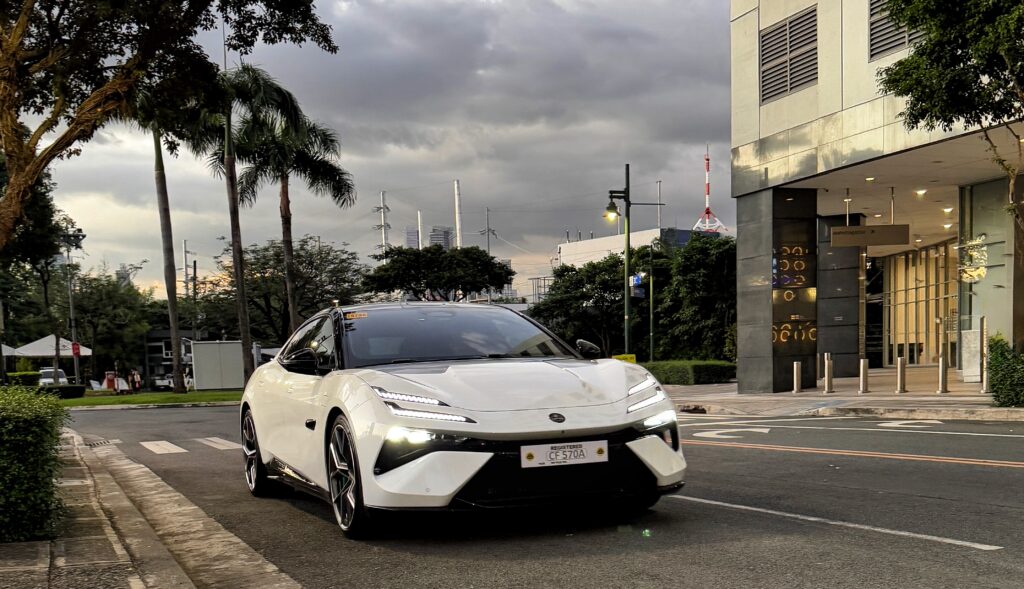 Despite its massive 2,560kg curb weight, acceleration is terrifying to the uninformed and uninitiated as the Emeya’s massive Michelin Pilot Sport EV LTS performance tires scramble for traction on less-than-perfectly smooth roads. I first rode in the Emeya in Singapore when our foreign contributor Jay Kew picked me up last year for dinner while I was visiting Singapore, and now behind the wheel, it feels even more overwhelming. Over there, on cold tires and cold, damp roads, the Emeya was struggling for grip on Singapore’s pool-table-smooth roads. In Manila, you can imagine the risk of flooring it recklessly on our pock-marked roads. Lotus claims a sprint to 100km/h in 4.15 seconds from rest, all the way to a 250km/h top speed, which is mighty fast for an EV.
Despite its massive 2,560kg curb weight, acceleration is terrifying to the uninformed and uninitiated as the Emeya’s massive Michelin Pilot Sport EV LTS performance tires scramble for traction on less-than-perfectly smooth roads. I first rode in the Emeya in Singapore when our foreign contributor Jay Kew picked me up last year for dinner while I was visiting Singapore, and now behind the wheel, it feels even more overwhelming. Over there, on cold tires and cold, damp roads, the Emeya was struggling for grip on Singapore’s pool-table-smooth roads. In Manila, you can imagine the risk of flooring it recklessly on our pock-marked roads. Lotus claims a sprint to 100km/h in 4.15 seconds from rest, all the way to a 250km/h top speed, which is mighty fast for an EV.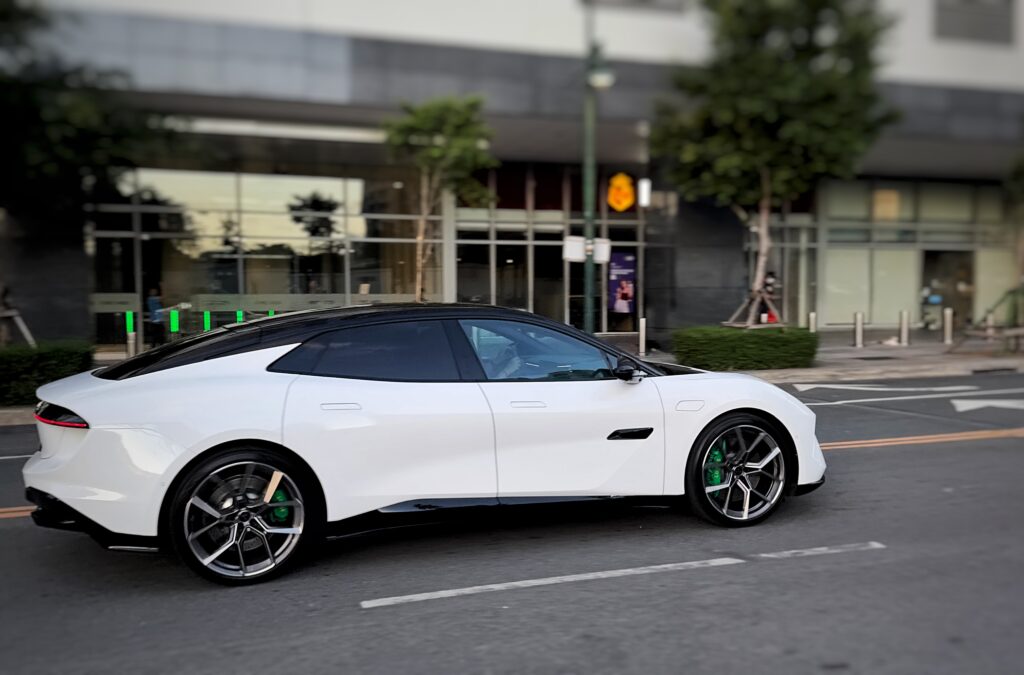 There are massive 6-piston Brembo brakes (even more ludicrous 10-piston AP Racing brake calipers are optional) available, clamping down on equally enormous steel or the optional carbon-ceramic discs, which bring the Emeya to a complete halt consistently and repeatedly, no doubt helped by its regenerative braking abilities. Pedal feel is light, feedback accurate, well modulated, and progressive.
There are massive 6-piston Brembo brakes (even more ludicrous 10-piston AP Racing brake calipers are optional) available, clamping down on equally enormous steel or the optional carbon-ceramic discs, which bring the Emeya to a complete halt consistently and repeatedly, no doubt helped by its regenerative braking abilities. Pedal feel is light, feedback accurate, well modulated, and progressive.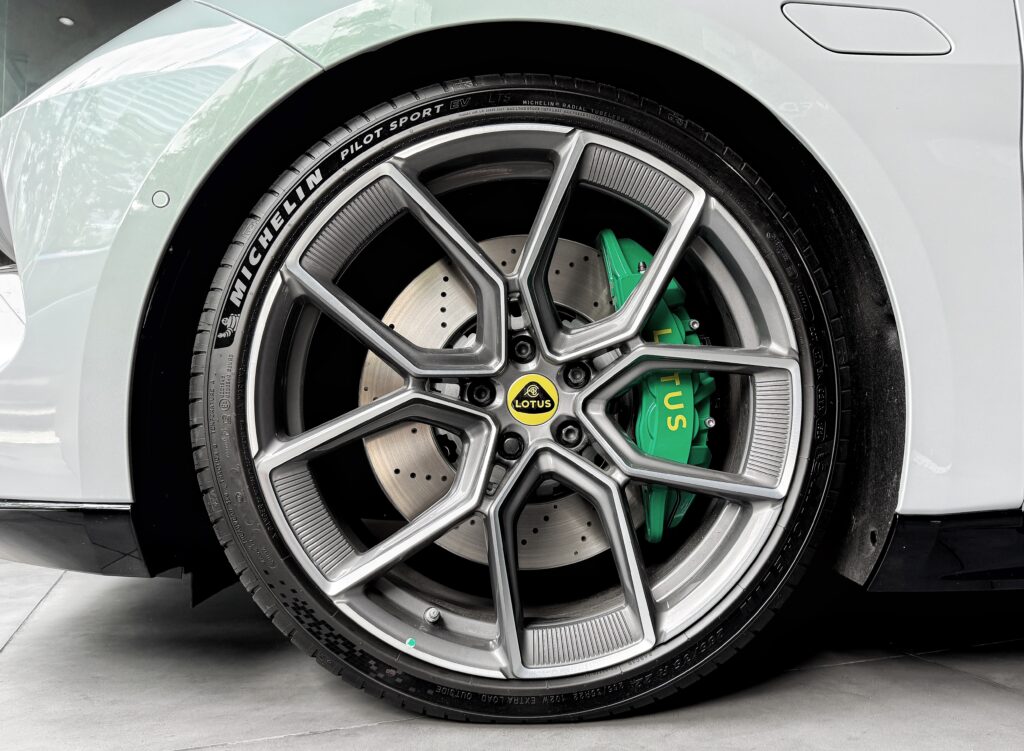 Steering is light, slightly wooly but surprisingly intuitive and very accurate. There’s some vagueness on-center, but as you pile on steering lock, the tiller weighs up evenly and progressively. It feels slightly nervous when you’re sawing through the wheel madly on successive tight turns, combined with loads of instant torque, so treat the Emeya with respect, else you find yourself sideways and heading straight for the hedge.
Steering is light, slightly wooly but surprisingly intuitive and very accurate. There’s some vagueness on-center, but as you pile on steering lock, the tiller weighs up evenly and progressively. It feels slightly nervous when you’re sawing through the wheel madly on successive tight turns, combined with loads of instant torque, so treat the Emeya with respect, else you find yourself sideways and heading straight for the hedge.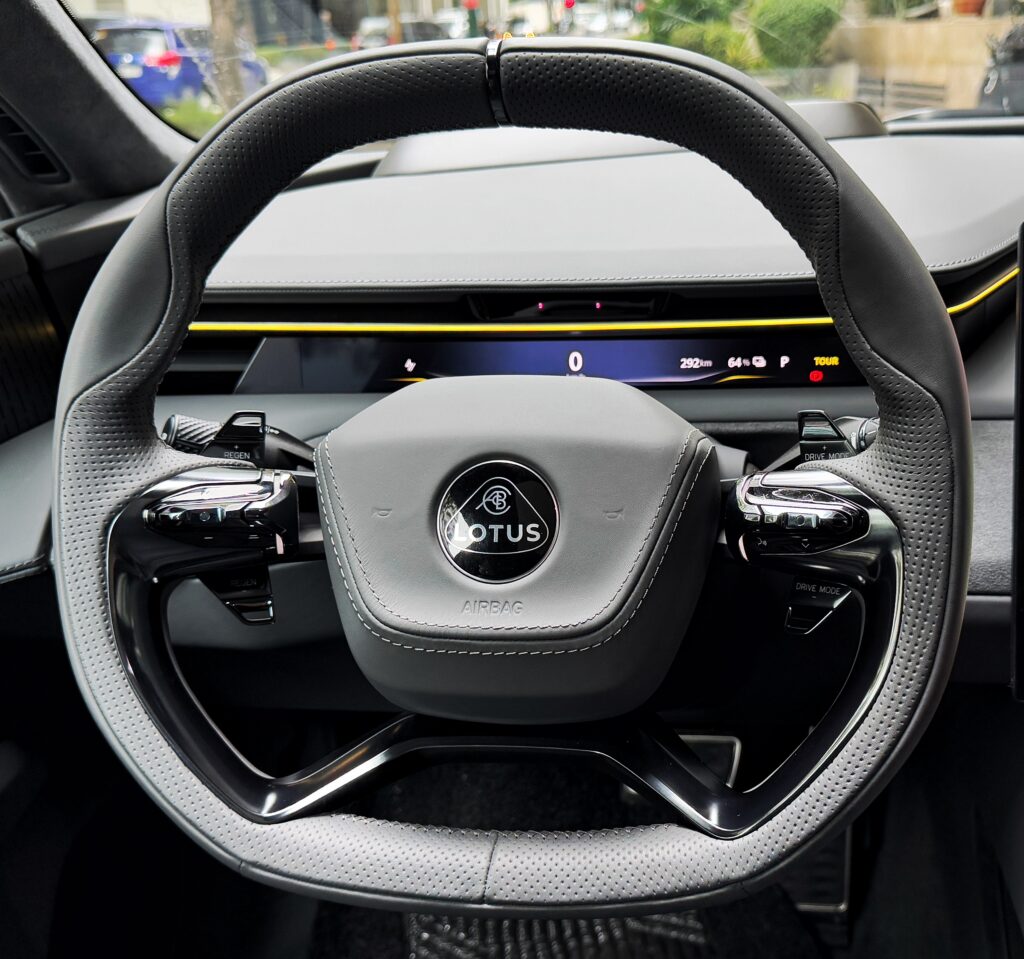 On the surface, the Emeya doesn’t seem to be the perfect choice for B-road blasting, as its size alone makes it a poor contender for that, but it’s happiest and most enjoyable being in its element on flowing A-roads as well as highways and expressways. And yet, the massive Lotus acquits itself extremely well when the roads get very twisty.
On the surface, the Emeya doesn’t seem to be the perfect choice for B-road blasting, as its size alone makes it a poor contender for that, but it’s happiest and most enjoyable being in its element on flowing A-roads as well as highways and expressways. And yet, the massive Lotus acquits itself extremely well when the roads get very twisty.
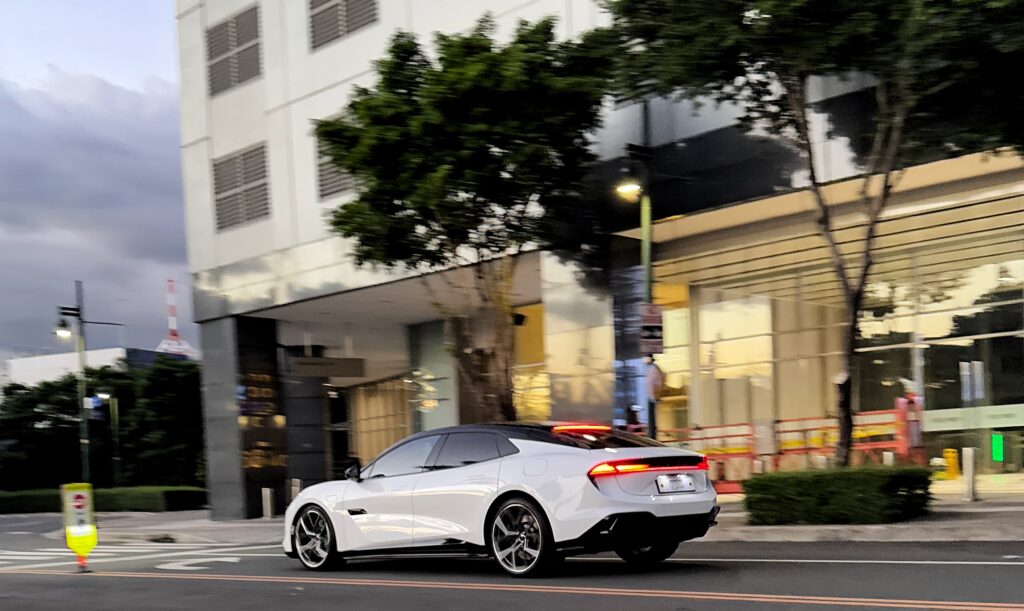 Its secret weapon for sharp handling? Torque-vectoring by braking. Thanks to the back-up from the dual-chamber CDC continuously damping control adaptive air suspension, the brakes clamp on the rear inner wheel of the Emeya, helping it tighten its line on corners and clip the apex, the suspension firming up the outside wheel to help push the Emeya further inwards towards the ideal line.
Its secret weapon for sharp handling? Torque-vectoring by braking. Thanks to the back-up from the dual-chamber CDC continuously damping control adaptive air suspension, the brakes clamp on the rear inner wheel of the Emeya, helping it tighten its line on corners and clip the apex, the suspension firming up the outside wheel to help push the Emeya further inwards towards the ideal line.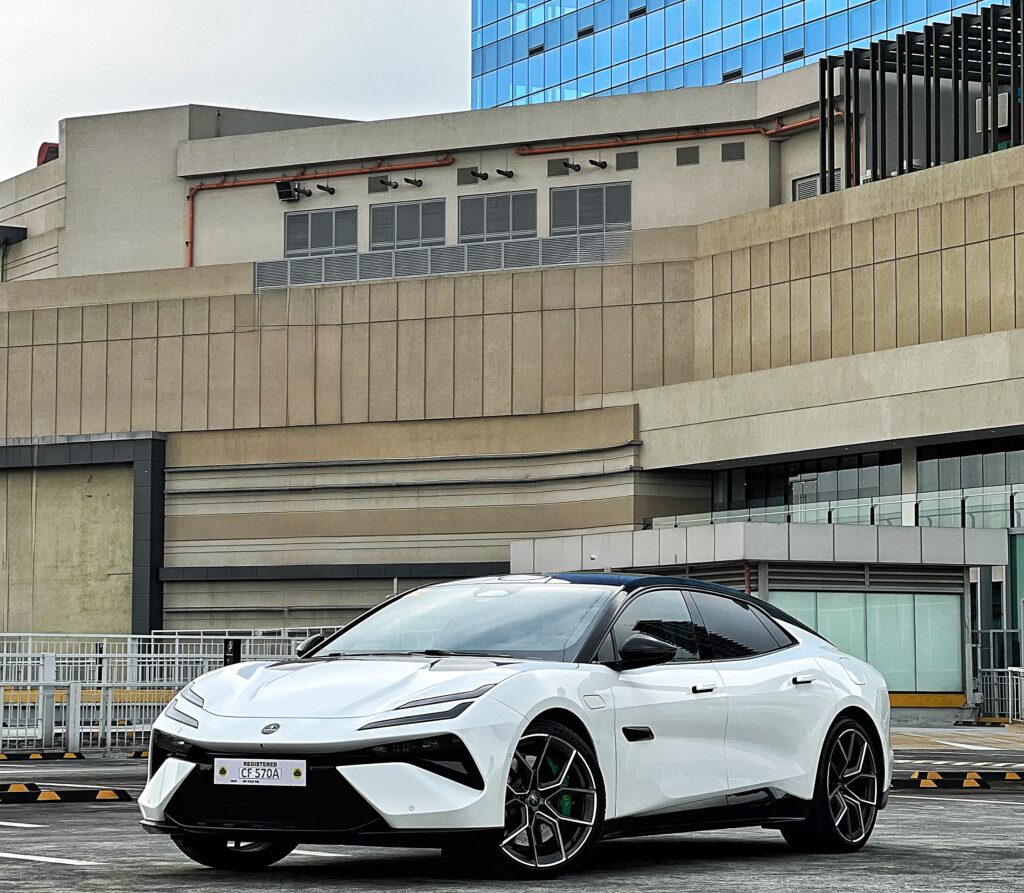 The CDC suspension, of course, keeps the ride properly firm and sporty, yet pliant and reasonable when the roads are less than ideal. Truly an engineering marvel considering the weight and the licorice-thin staggered 22-inch wheels and tires (with steam-roller sized 265/35R22 fronts and 305/30R22 rears).
The CDC suspension, of course, keeps the ride properly firm and sporty, yet pliant and reasonable when the roads are less than ideal. Truly an engineering marvel considering the weight and the licorice-thin staggered 22-inch wheels and tires (with steam-roller sized 265/35R22 fronts and 305/30R22 rears).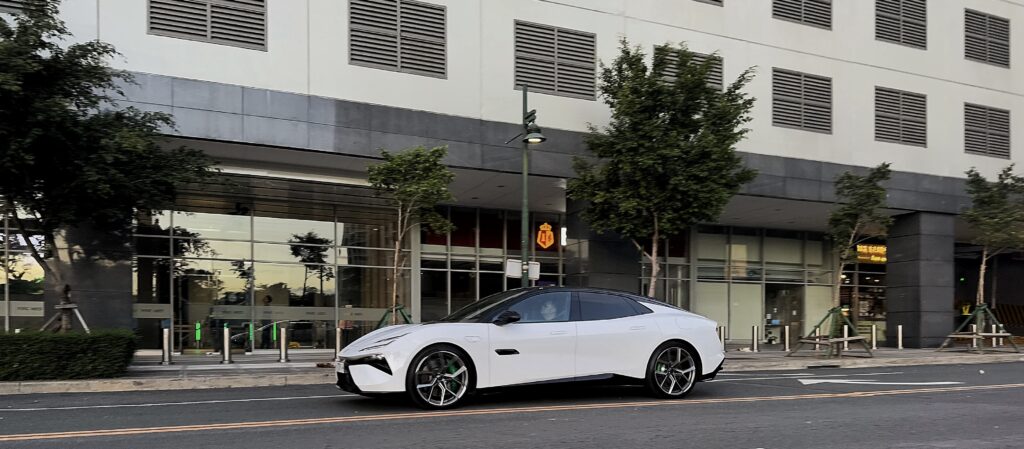 The cabin is like a glove: comfortable, roomy around the legs so you can rest your knees easily, but the low roof means it’s intimate, almost sensual. The back seat also feels intimate: it’s tight but not stuffy, holding you in place comfortably with just enough space to spare for comfort. Imagine flying over the Atlantic in a Concorde and you get the feeling.
The cabin is like a glove: comfortable, roomy around the legs so you can rest your knees easily, but the low roof means it’s intimate, almost sensual. The back seat also feels intimate: it’s tight but not stuffy, holding you in place comfortably with just enough space to spare for comfort. Imagine flying over the Atlantic in a Concorde and you get the feeling. 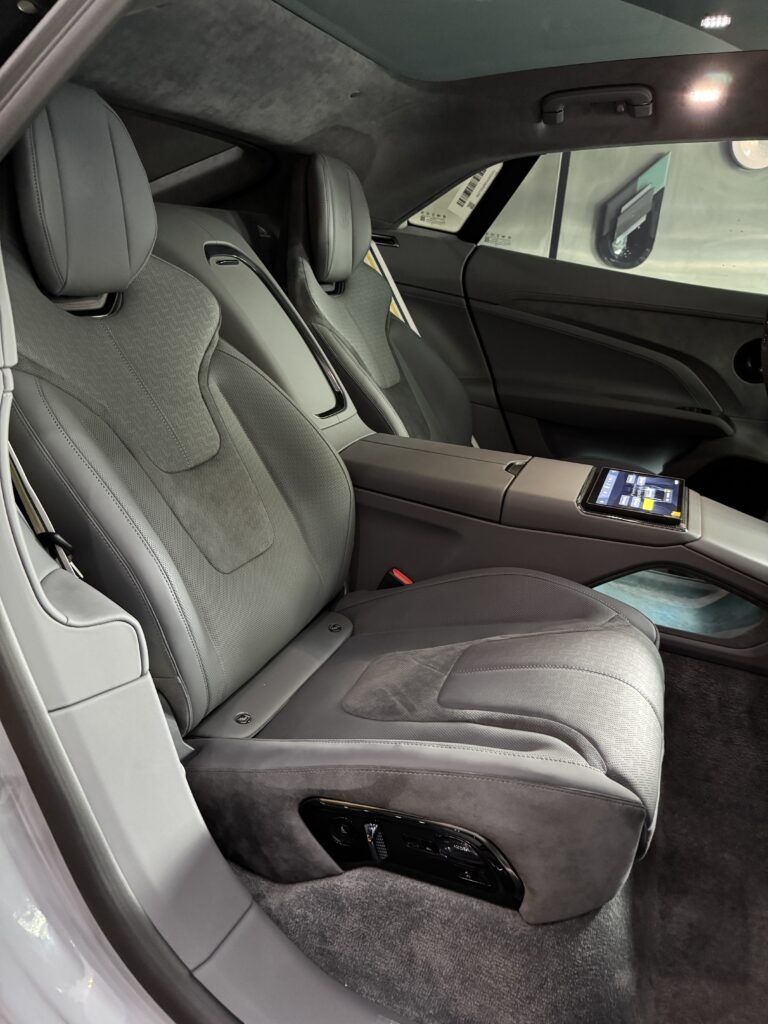 A huge LCD infotainment screen entertains the rear passengers further if the blur of the outside world is not for them.
A huge LCD infotainment screen entertains the rear passengers further if the blur of the outside world is not for them.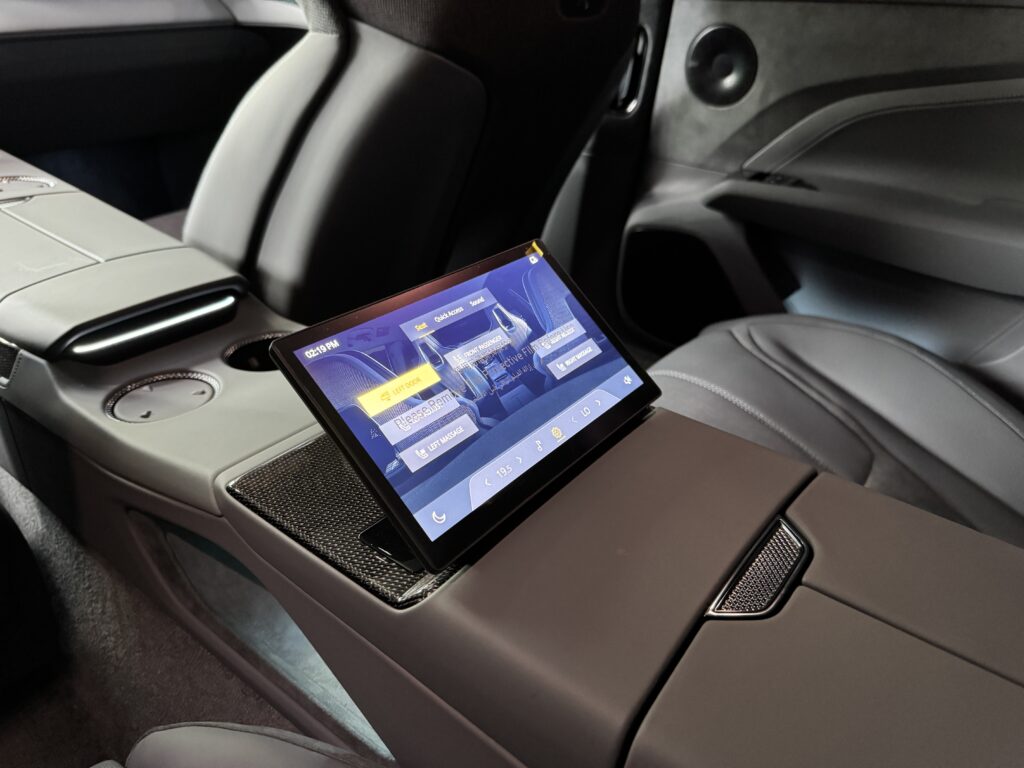 The Lotus Emeya features a premium KEF surround sound system offering an immersive Dolby Atmos spatial audio experience enhanced by an over-the-air update for Apple CarPlay. This KEF system uses technologies like a version of the signature Uni-Q driver array, Shadow Flare, and Uni-Core to deliver accurate, coherent sound for all occupants. It’s also perhaps the brand’s last remaining link to Old Blighty, as KEF is also a British brand.
The Lotus Emeya features a premium KEF surround sound system offering an immersive Dolby Atmos spatial audio experience enhanced by an over-the-air update for Apple CarPlay. This KEF system uses technologies like a version of the signature Uni-Q driver array, Shadow Flare, and Uni-Core to deliver accurate, coherent sound for all occupants. It’s also perhaps the brand’s last remaining link to Old Blighty, as KEF is also a British brand.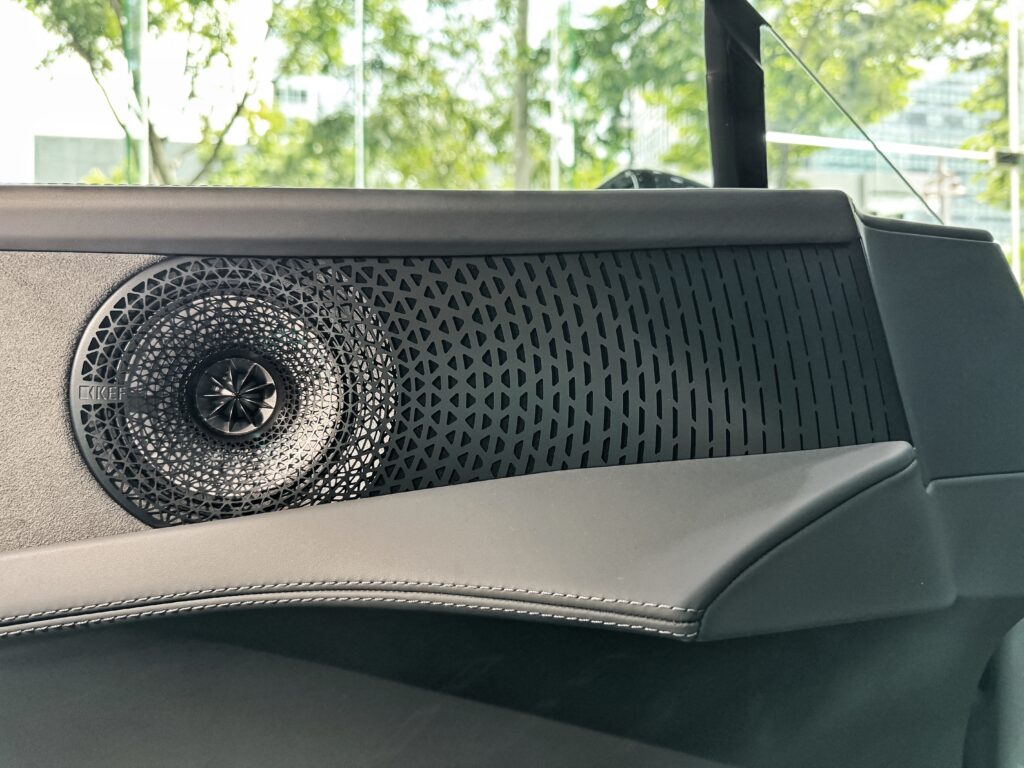 The one disconcerting aspect of the Emeya’s user experience is its Chinese-sourced electronics interface: the entire in-car electronics is very highly similar, if not identical, to Lynk & Co, Volvo, and Zeekr (all Geely-owned brands). I’ve driven examples of these brands, which all use the same in-car electronics, and while it is inherently very good, you just expect some form of differentiation. However, Lotus previously had no sort of infotainment system whatsoever, so in hindsight, this is probably a massive improvement. It also comes with Geely Group’s ADAS safety suite (front and rear crash mitigation, front and rear impact alert, rear traffic alert, adaptive cruise control, to name a few features) plus traction/stability control, ABS-EBD brakes, 9 airbags, torque vectoring, and more.
The one disconcerting aspect of the Emeya’s user experience is its Chinese-sourced electronics interface: the entire in-car electronics is very highly similar, if not identical, to Lynk & Co, Volvo, and Zeekr (all Geely-owned brands). I’ve driven examples of these brands, which all use the same in-car electronics, and while it is inherently very good, you just expect some form of differentiation. However, Lotus previously had no sort of infotainment system whatsoever, so in hindsight, this is probably a massive improvement. It also comes with Geely Group’s ADAS safety suite (front and rear crash mitigation, front and rear impact alert, rear traffic alert, adaptive cruise control, to name a few features) plus traction/stability control, ABS-EBD brakes, 9 airbags, torque vectoring, and more.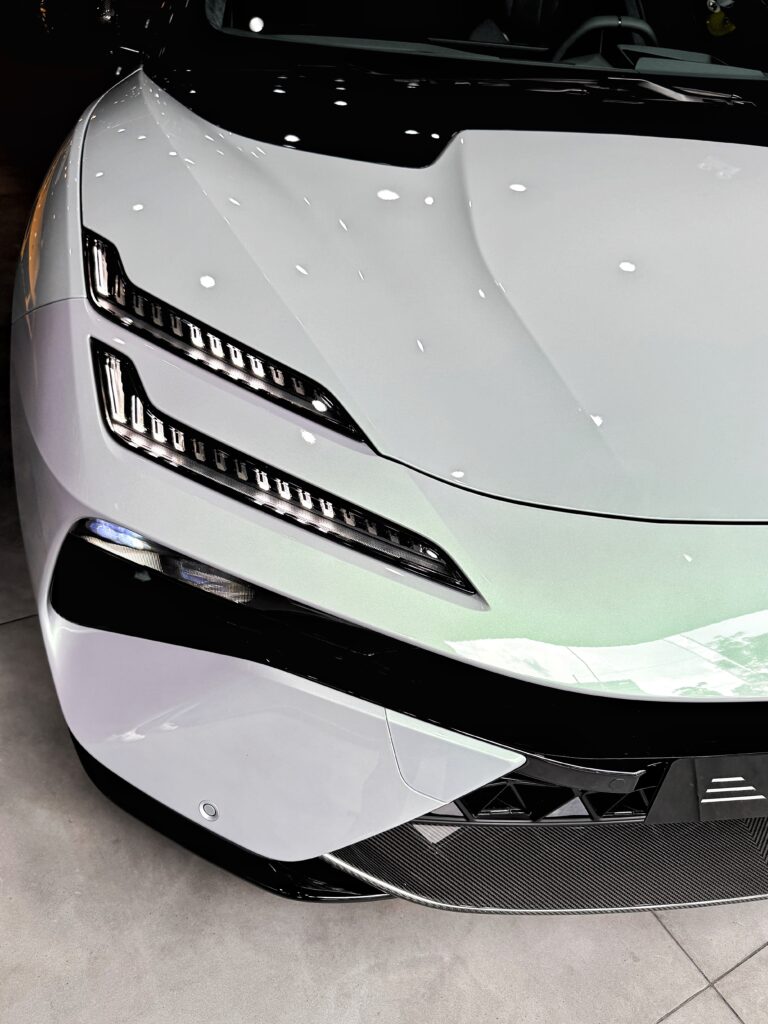 Appreciating the Emeya needs a hard-reset of your brain. It defies the laws of physics and rewrites what’s possible for such a massive and very heavy sedan. It should be impossible, but Lotus never got the memo.
Appreciating the Emeya needs a hard-reset of your brain. It defies the laws of physics and rewrites what’s possible for such a massive and very heavy sedan. It should be impossible, but Lotus never got the memo.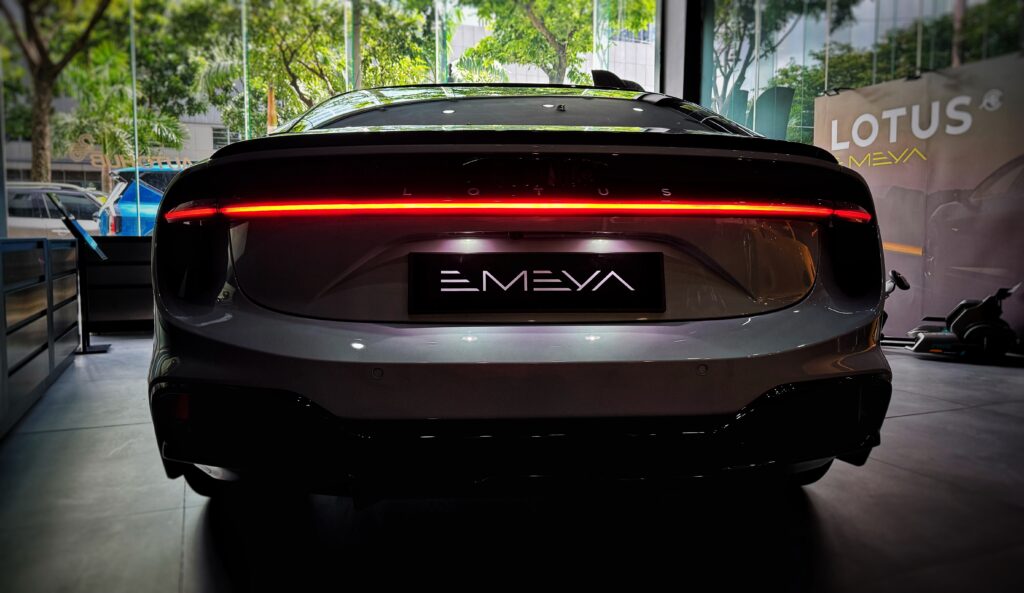 Forget your biases, forget your preconceived notions on what it should be, and focus on what it actually is and can do. It’s mind-blowing. The Emeya is here to shake-up the establishment.
Forget your biases, forget your preconceived notions on what it should be, and focus on what it actually is and can do. It’s mind-blowing. The Emeya is here to shake-up the establishment.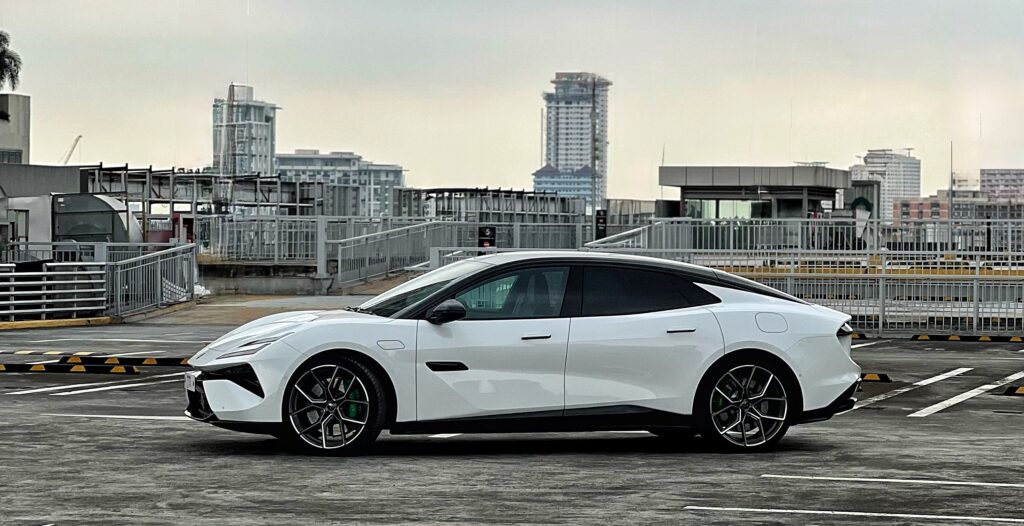 Lotus plans to increase production from a niche 1,500 units to 150,000 units annually, eventually. Much, if not all, of that will be fully automated production from China, driving costs down and making the brand more accessible. But Lotus also promises an all-electric future for the brand. Will we still see a small, nimble, and lightweight sports car from the brand to appease traditionalists who ascribe to the late Sir Colin Chapman’s philosophy?
Lotus plans to increase production from a niche 1,500 units to 150,000 units annually, eventually. Much, if not all, of that will be fully automated production from China, driving costs down and making the brand more accessible. But Lotus also promises an all-electric future for the brand. Will we still see a small, nimble, and lightweight sports car from the brand to appease traditionalists who ascribe to the late Sir Colin Chapman’s philosophy?
Here’s hoping against hope that we do.

